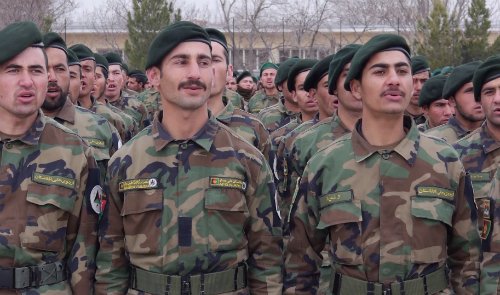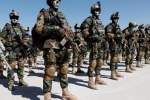Attacks are increasing while the strength of Afghan security forces decreases. Schools are closing amid the violence, and no girls are being enrolled in many districts. Efforts to root out Afghan government corruption have either stalled, or never got off the ground.
Publish dateSaturday 3 August 2019 - 12:40
Story Code : 189420
The bleak description of Afghanistan's status nearly 18 years after the U.S. invaded following the Sept. 11, 2001, terror attacks came in the latest quarterly report to Congress released Thursday by the Office of the Special Inspector General for Afghanistan Reconstruction (SIGAR).
The 270-page report states that 6,445 enemy-initiated attacks, or EIAs, occurred between March 1 and May 31, a 9% increase over the previous quarter. More than half of the attacks were in five of Afghanistan's 34 provinces -- Helmand, Badghis, Faryab, Herat and Farah.
At the same time, the number of Afghan troops and police on the books fell significantly, the report found, likely the result of the elimination of so-called "ghost" soldiers from the records.
Related: US May Withdraw Thousands of Troops from Afghanistan as Part of Proposed Taliban Deal
Previous SIGAR reports have cited the practice by corrupt Afghan commanders of listing non-existent troops or police on their rosters to draw their salaries, which are paid by the U.S.
The report states that the number of Afghan National Security and Defense Forces (ANSDF), which includes both troops and police, fell by nearly 42,000 between March and May, compared to the same period last year.
It cites data from the U.S.-led coalition to attribute much of the decline to the ANSDF's switch to counting only troops validated as existing by biometrics, rather than relying on the numbers reported by field commanders.
"The change was part of an effort by the United States and its partners to reduce opportunities for corrupt ANSDF officials to report 'ghost' soldiers and police on personnel rolls in order to pocket the salaries," the report states.
The lengthy report paints an overall bleak picture of the prospects for Afghanistan in establishing a stable democracy and open society.
"The Afghan government cannot survive financially or militarily without continued external assistance, and with those donor funds comes the dual risk of losing money to corruption, as well as contributing to fostering corruption by distorting the economy," John Sopko, the head of SIGAR, said in a statement included in the report.
American officials have repeatedly cited the opening of schools and the enrollment of girls, who were barred from school under Taliban rule, as signs of progress since the U.S. intervention.
However, the SIGAR report states that schools are closing amid attacks by the Taliban and the ISIS offshoot known as Islamic State-Khorasan Province, or ISIS-K.
Citing data from the United Nations Children's Fund (UNICEF), the report found that schools were attacked 192 times in 2018, up from 68 in 2017, and more than 1,000 schools had shut down in 2018 during the ongoing conflict.
"High levels of school closures continued in 2019," the report states.
In addition, "girls' education lags across much of southern Afghanistan," where there were seven provinces in which no girls were enrolled in 50% of the districts, the report found. "Nearly 2.6 million girls are out of school in Afghanistan, according to the Afghan government," it adds.
The report came amid continuing efforts by Zalmay Khalilzad, the U.S special representative for Afghanistan reconciliation, to broker a peace deal with the Taliban, and calls from the White House and several of the Democratic presidential contenders for an end to the U.S. presence in Afghanistan.
"We're working on negotiating a deal right now, as you probably have heard, and you know, at some point, we want to get out as quickly as we can," President Donald Trump said in an interview on C-Span Wednesday.
As is often the case with SIGAR reports, the dire situation painted by Sopko was at odds with the limited progress described by the Defense Department last month in one of its required periodic assessments to Congress.
"The injection of new military capabilities and operational authorities" by Army Gen. Scott Miller, commander of U.S. Forces Afghanistan and the NATO Resolute Support Mission, "has restored the coalition's tactical initiative and put heavy pressure on the Taliban," the Pentagon report said.
"The objective of the operational design is to bring the Taliban to the bargaining table and to provide strong incentives for them to engage in meaningful negotiations with the U.S. and Afghan governments," it added.
The report was released July 12, a day after Army Gen. Mark Milley testified before the Senate Armed Services Committee at his confirmation hearing to become the next chairman of the Joint Chiefs of Staff.
In his remarks, he said of the increasing calls for withdrawal, "I think pulling out prematurely would be a strategic mistake."
The 270-page report states that 6,445 enemy-initiated attacks, or EIAs, occurred between March 1 and May 31, a 9% increase over the previous quarter. More than half of the attacks were in five of Afghanistan's 34 provinces -- Helmand, Badghis, Faryab, Herat and Farah.
At the same time, the number of Afghan troops and police on the books fell significantly, the report found, likely the result of the elimination of so-called "ghost" soldiers from the records.
Related: US May Withdraw Thousands of Troops from Afghanistan as Part of Proposed Taliban Deal
Previous SIGAR reports have cited the practice by corrupt Afghan commanders of listing non-existent troops or police on their rosters to draw their salaries, which are paid by the U.S.
The report states that the number of Afghan National Security and Defense Forces (ANSDF), which includes both troops and police, fell by nearly 42,000 between March and May, compared to the same period last year.
It cites data from the U.S.-led coalition to attribute much of the decline to the ANSDF's switch to counting only troops validated as existing by biometrics, rather than relying on the numbers reported by field commanders.
"The change was part of an effort by the United States and its partners to reduce opportunities for corrupt ANSDF officials to report 'ghost' soldiers and police on personnel rolls in order to pocket the salaries," the report states.
The lengthy report paints an overall bleak picture of the prospects for Afghanistan in establishing a stable democracy and open society.
"The Afghan government cannot survive financially or militarily without continued external assistance, and with those donor funds comes the dual risk of losing money to corruption, as well as contributing to fostering corruption by distorting the economy," John Sopko, the head of SIGAR, said in a statement included in the report.
American officials have repeatedly cited the opening of schools and the enrollment of girls, who were barred from school under Taliban rule, as signs of progress since the U.S. intervention.
However, the SIGAR report states that schools are closing amid attacks by the Taliban and the ISIS offshoot known as Islamic State-Khorasan Province, or ISIS-K.
Citing data from the United Nations Children's Fund (UNICEF), the report found that schools were attacked 192 times in 2018, up from 68 in 2017, and more than 1,000 schools had shut down in 2018 during the ongoing conflict.
"High levels of school closures continued in 2019," the report states.
In addition, "girls' education lags across much of southern Afghanistan," where there were seven provinces in which no girls were enrolled in 50% of the districts, the report found. "Nearly 2.6 million girls are out of school in Afghanistan, according to the Afghan government," it adds.
The report came amid continuing efforts by Zalmay Khalilzad, the U.S special representative for Afghanistan reconciliation, to broker a peace deal with the Taliban, and calls from the White House and several of the Democratic presidential contenders for an end to the U.S. presence in Afghanistan.
"We're working on negotiating a deal right now, as you probably have heard, and you know, at some point, we want to get out as quickly as we can," President Donald Trump said in an interview on C-Span Wednesday.
As is often the case with SIGAR reports, the dire situation painted by Sopko was at odds with the limited progress described by the Defense Department last month in one of its required periodic assessments to Congress.
"The injection of new military capabilities and operational authorities" by Army Gen. Scott Miller, commander of U.S. Forces Afghanistan and the NATO Resolute Support Mission, "has restored the coalition's tactical initiative and put heavy pressure on the Taliban," the Pentagon report said.
"The objective of the operational design is to bring the Taliban to the bargaining table and to provide strong incentives for them to engage in meaningful negotiations with the U.S. and Afghan governments," it added.
The report was released July 12, a day after Army Gen. Mark Milley testified before the Senate Armed Services Committee at his confirmation hearing to become the next chairman of the Joint Chiefs of Staff.
In his remarks, he said of the increasing calls for withdrawal, "I think pulling out prematurely would be a strategic mistake."
Source : military.com
avapress.net/vdcdxn0fzyt0jo6.em2y.html
Tags
Top hits









